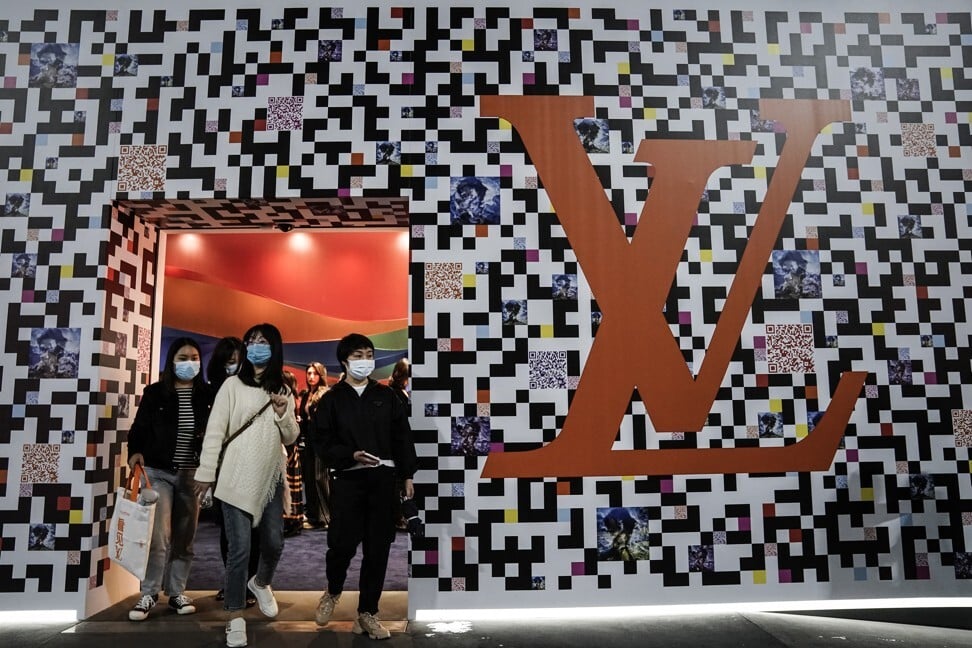
China’s new fashion hubs rising as luxury brands look to cities like Chengdu and Hangzhou for millennials growing in wealth
- With China’s top-tier cities like Shanghai and Beijing becoming saturated, luxury brands are increasingly targeting second- and third-tier cities for growth
- Repeating the same strategies, however, won’t work – instead they need to do a deep dive into understanding local consumer culture
On the site of a one-time Buddhist monastery in Chengdu, hundreds of young shoppers pose for selfies in front of the brightly lit Sino-Ocean Taikoo Li mega-mall and carry bags marked Hermès and Gucci. On smaller, tree-lined streets throughout the city in southwest China, teenagers dress in the latest trends and gather to admire each other’s outfits and upload images to social media.
While the pandemic has contributed to China’s role as a future fashion leader with cities to rival to Paris and Milan, that doesn’t mean all the attention should be focused on Shanghai.
Far from it, in fact. While Western luxury brands have traditionally poured all of their resources into securing the best sites in Chinese international hubs, these cities are becoming saturated and cripplingly expensive. The next big frontier arguably lies in capturing the market in so-called tier-two and tier-three cities.
“Given the collective wealth and population in China’s top-tier regions, it is no wonder that luxury brands choose to focus their efforts in cities like Shanghai, Beijing, Guangzhou and Shenzhen,” says Charlie Gu, founder of marketing firm Kollective World. “But more affordable housing, better job prospects and improved transportation networks have driven more Chinese consumers to smaller cities near the top-tier mega hubs. As more young professionals move out, they are taking their finer tastes and bigger wallets with them.”

A young professional could easily live in Wuxi – a city 140km (87 miles) away from Shanghai – and take a 30-minute high-speed train into Shanghai every day for work and have a high disposable income thanks to a good salary combined with lower living costs.
There are now well over 100 cities in China with a population of over one million. “It’s really time for international brands to venture into the second- and third-tier cities if they want to keep [their] current growth rate,” Gu says.
China’s tiered city system explained
“Chengdu [has] consumption power, commercial potential and cultural charm,” the publication said. “This is a city with equal emphasis on economic, commercial and cultural soft power, already at China’s forefront when it comes to cultivating youth trends and a younger generation of fashion consumers.”
Another leading second-tier city is Hangzhou, renowned for its heritage sites and culture. The city in China’s southeast is home to tech giants like Alibaba and welcomes a steady flow of young professionals hoping to work for one of the major companies based there – and who dress accordingly. (Alibaba owns the South China Morning Post.)

Along with Chengdu, Hangzhou has become a new frontier for major fashion trends, with some commentators suggesting that it could be a rival to Seoul, the South Korean capital, in years to come.
Other major contenders for Seoul’s crown are tier-two cities Nanjing and Wuhan, whose rise in importance within the fashion industry is directly linked to the coronavirus pandemic.
With Western countries not recovering from Covid-19 as quickly as China, and as cities such as London continue to keep non-essential retail stores closed, brands are having to look elsewhere for sales. The almost complete shutdown of international travel has meant that Chinese customers, instead of travelling abroad to shop, have been forced to do so at home, increasing the need for bricks-and-mortar stores in their own cities.
Consumers in these [second- and third-tier] cities, especially millennials, are also looking for better-value luxury purchases
While most Western luxury brands have worked hard to ensure they are partnered with companies like Tmall, an e-commerce platform operated by Alibaba, they have also realised that they can’t focus all their marketing efforts on America and Europe while expecting Chinese consumers to buy on holiday or online.
“For brands that have established deep roots in top-tier markets, really building their brands in these smaller cities is the natural next step,” Gu says. “Legacy luxury brands will likely take the lead since their growth in top-tier markets is more or less saturated, but trendy luxury streetwear labels have huge potential too. Consumers in smaller cities sometimes feel less obligated to conform to the traditional perceptions and more likely to embrace new trends.”
To attract new customers, brands will have to adjust their marketing tactics. While social media means that consumers living away from international fashion hubs are now just as easy to reach, and often as fashion literate, as those that live in them, there is a distinct difference in how they consume social media.
Kamala Harris’ team says it was blindsided by Vogue cover
“While Douyin [the Chinese version of TikTok] and Little Red Book [a social media and e-commerce platform] are popular in top-tier cities, apps like Kuai and Pinduoduo are growing everywhere else,” Gu says. “More KOLs [key opinions leaders] are emerging in these markets because their content is localised and resonates better with the local communities.
“Consumers in these cities, especially millennials, are also looking for better-value luxury purchases. So they will either be loyal to legacy luxury brands like Louis Vuitton or opt for light luxury like Coach.”
After a year of crisis, growth in these cities should help keep certain brands afloat, but companies headquartered in Paris, Milan or London must understanding how the markets in these smaller Chinese hubs operate. Repeating strategies used in Shanghai or Hong Kong won’t work; instead they will need to do a deep dive into understanding local consumer culture.

